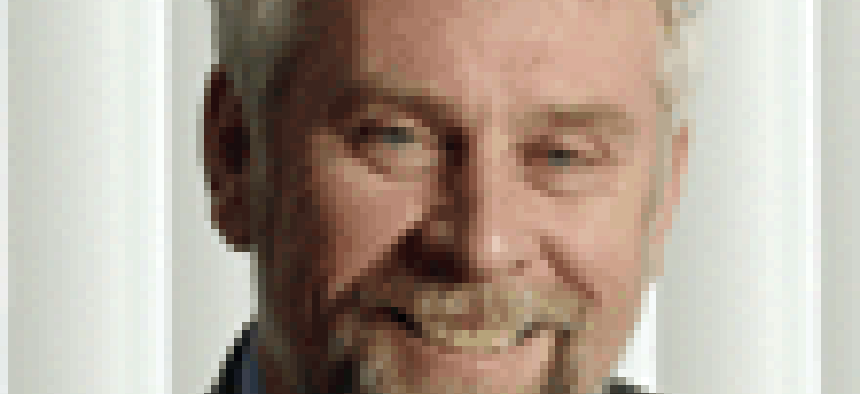Answers from the Amazon

A massive surveillance system designed by Raytheon Co. to protect Brazil's Amazon Jungle against illegal mining and other ecological threats could play a similar role in protecting U.S. borders and ports of entry. It's a "truly unique" program that is the first of its kind to be national in scope, according to Raytheon business development manager Philip Marshall.
A massive surveillance system designed by Raytheon Co. to protect Brazil's Amazon Jungle against illegal mining and other ecological threats could play a similar role in protecting U.S. borders and ports of entry.For more than five years, Raytheon has been designing and putting in place a $1.4 billion system that covers 2 million square miles and acts as an early warning system for one of Earth's great wilderness areas. The System for the Vigilance of the Amazon, or SIVAM, knits together surveillance data gathered from satellites, monitoring aircraft and ground and river sensors into multilayered databases.SIVAM is the first line of defense in tracking incursions into the Amazon. For example, operators may ask the SIVAM software to alert them automatically when it detects a change in the forest environment, such as a clearing that could be used by drug smugglers for a landing strip. When an alert happens, Brazilian law enforcement examines other surveillance information to determine whether to investigate further or even make a raid on the suspected drug smugglers.In April, thenewspaper reported that during just one month, the SIVAM monitoring system "allowed the identification of 84 planes in irregular flights and 34 clandestine landing strips."With the installation phase drawing to a close, Raytheon is looking to apply the lessons learned creating SIVAM to the growing demand for homeland security solutions, especially those related to border control. Company officials said the surveillance system already has generated significant interest in the United States and other nations.SIVAM is "truly a unique program," said Philip Marshall, manager of business development for Raytheon's Wide Area Surveillance and Management program, a new unit intended to market SIVAM's potential. "No one has put together a [command, control, computers, communications and intelligence] program on a national level," he said.To understand the system's homeland security potential, it's helpful to understand the challenges of protecting the Amazon environment. The Amazon Basin makes up more than 60 percent of Brazil's national territory. It contains a third of the world's tropical rain forests and is home to more than 30 percent of known plant and animal species, with more discovered every year. The region also contains 20 percent of the world's fresh water supply, a statistic of great significance considering that 50 percent of the world supply is at the Earth's two poles, said Greg Vuksich, president of Raytheon Brazil. "The Amazon handles 20 times the volume of the Mississippi River," he said.But this region is under pressure ecologically. From slash-and-burn agriculture to illegal mining and drug trafficking, the Amazon is beset by man-made threats. Illegal mining, for instance, threatens the environment and siphons off valuable natural resources. "These are not simply latter-day 49ers," Vuksich said, referring to the California gold-rush miners of 1849. "It can look like pretty sophisticated strip mining operations."The data SIVAM gathers is shared among 11 of Brazil's major government agencies, which use it for their day-to-day operations and fulfilling their overall missions, he said. The databases also are shared with universities, research organizations and commercial enterprises.In applying the lessons of SIVAM to homeland security, Raytheon is not looking to use the specific technology and information systems in SIVAM, but to design a solution that meets the unique needs of border control and protection.A border control system, for instance, might incorporate existing monitoring satellites, planes and sensors that have been installed by the agencies responsible for protecting the border. But the databases would compile different kinds of information than SIVAM, and generate alerts about different types of changes in conditions, such as an alarm if a fence is cut.[IMGCAP(2)]"It's a significant technical problem," Marshall said. "It's not only about detecting someone crossing the border. You [have to be able to] apprehend them."Bringing together the technology into a single system that can gather the data is just part of the challenge. The system must also structure the data, interpret it and display it in a way that helps users make decisions.While assembling technologies into a single interactive system is daunting, Raytheon believes the greater hurdle is the bureaucratic one. Several years ago, Henrique Cardoso, then-president of Brazil, decided to purchase SIVAM, and the Office of the President continues to play a major role in directing cooperation of government agencies, Vuksich said.That level of executive support, in which the president commits government resources to a specific solution, is less likely to be played out in the United States, Marshall said. While it is possible that the Department of Homeland Security could coordinate participation of its 22 agencies, extending that high level of cooperation to other departments that might also use the data will add another layer of complexity, he said.Raytheon demonstrated its proposed solution to Spanish government officials, showing how it could address an ongoing problem of illegal immigrants crossing the Straits of Gibraltar and entering the country. Marshall said the system started tracking a suspicious small boat during the presentation, and officials on hand alerted authorities, who captured a drug smuggler with cargo. Spanish officials joked with him that Raytheon had arranged the incident as part of the demonstration, he said."We [had] struggled with selling national systems in a number of countries," Marshall said, "but crisis management and border surveillance is growing fast. ... In the last year, it has really gathered momentum."Some requests for proposals now are "close to hitting the streets" for addressing border control along the U.S.-Canada border, he said."We would expect to have some contracts this year. Not necessarily in the United States, [but countries] are doing something now," Marshall said. *Staff Writer Patience Wait can be reached at pwait@postnewsweektech.com.

 A surveillance system that protects the Brazilian jungle can teach United States a lot about homeland security
A surveillance system that protects the Brazilian jungle can teach United States a lot about homeland security
Jornal do Brasil

SIVAM protects the environment by monitoring the flow and clarity of the water in the Amazon region.
Raytheon Co.

SIVAM is "truly a unique program. No one has put together a [command, control, computers, communications and intelligence] program on a national level." ? Philip Marshall, Raytheon's Wide Area Surveillance and Management program
Henrik G. de Gyor
Jornal do Brasil
NEXT STORY: AMD attacks Intel domain